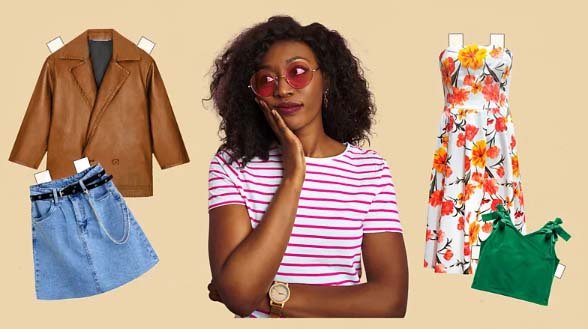Why do we dress like someone else when we go on holiday?
Published: 14 June 2025, 8:38:47

Why do we dress like someone else when we go on holiday? From multipurpose utility garments to Instagrammable maxi dresses and floppy hats, one thing is for sure – we don’t dress this way at home.
An American friend recently asked me what to wear on her first flight to Europe. “I want to be comfy but chic,” she said. She’d come to the wrong person. As a travel journalist, I’m either on assignment, sun cream-smeared in hiking boots and hauling a rucksack like a tortoise shell; or travelling light with a five-piece capsule wardrobe in beige neutrals to leave space for edible souvenirs.
Meanwhile, many of my fellow travellers parade past in floral gowns, breezy summer whites or cosy pyjama-like layers. Sometimes I glimpse my own reflection and feel a pang of FOMO. Should I have worn a floral dress to photograph ruins? I don’t even own one. Or perhaps instead of clunky hiking boots, I would be more comfortable in a pair of Birkenstocks, with thick white socks hiked up to my knees.
As disparate and sometimes dramatic as travel get-ups can be, one thing is for sure: we don’t dress this way back home.
The dawn of holiday wear
So why do we dress so differently when we’re on holiday – almost as if we’re someone else?
Marta Franceschini, head of communications and editorials at the European Fashion Heritage Association, says that the holiday wardrobe emerged alongside leisure travel in the 19th Century. “Prior to this, clothing for travel was primarily utilitarian, associated with migration, pilgrimage or military and trade expeditions,” she explained. According to Franceschini, the growth of the middle class and the expansion of railways in Europe in the mid-1800s meant that seaside resorts became fashionable destinations, prompting the development of travel wardrobes that fused elegance with comfort. Warm weather necessitated lighter, breathable fabrics such as linen and silk, and by the interwar period, designers like Coco Chanel were championing relaxed styles such as casual knitwear, wide-leg trousers and swimwear.
“The post-World War Two economic boom, coupled with the advent of commercial aviation, democratised travel further,” Franceschini added. “From the 1950s to the ’70s, leisurewear evolved into a distinct genre: Capri pants, resort prints, kaftans and cruise collections became staples.”
Franceschini also notes that the need to dress for unfamiliar temperatures “[permits] a certain relaxation of social dress codes”.
That explains sandals with socks.





